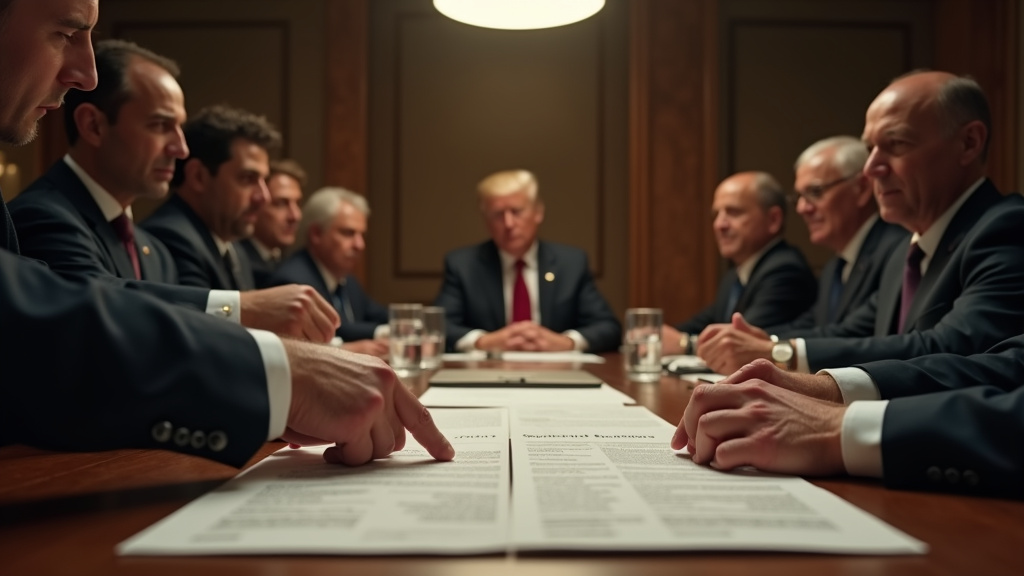JERUSALEM – October 6, 2025 – A significant, albeit conditional, acceptance from Hamas regarding a U.S.-brokered peace proposal has paved the way for crucial indirect negotiations with Israel, aiming to end the devastating nearly two-year conflict in Gaza. The groundbreaking development, announced by Hamas on Friday, October 3rd, centers on a comprehensive 20-point plan championed by U.S. President Donald Trump. This news has quickly become a top global story, drawing international attention and cautious optimism.
Hamas’s Conditional Acceptance and Key Demands
Hamas declared its conditional willingness to embrace President Trump’s ceasefire initiative, a move that has generated considerable buzz. Central to Hamas’s acceptance is the agreement to release all remaining Israeli hostages, both living and deceased, in exchange for hundreds of Palestinian prisoners held by Israel. This exchange formula is a core component of Trump’s proposal, which was unveiled earlier in the week.
However, Hamas has also stipulated that ‘field conditions for the exchange are met’ and indicated that other elements of the extensive plan ‘require further consultations among Palestinians’. While the militant group expressed readiness to begin negotiations on the finer details through mediators, their response has not been a full, unqualified endorsement, leaving critical aspects open for debate.
Trump’s Diplomatic Push and Stern Warnings
President Donald Trump has personally spearheaded this diplomatic effort, aiming to achieve a lasting peace in the Middle East. Following Hamas’s announcement, Trump conveyed that he believed the group was “ready for a lasting peace”. He issued a direct call to Israel, urging them to “immediately stop the bombing of Gaza” to ensure the safe and swift release of hostages, noting that the situation was “far too dangerous” for such operations.
Trump also delivered a clear ultimatum to Hamas, warning of severe consequences if progress faltered. In public statements and on social media, he emphasized the need for rapid action, stating, “Hamas must move quickly, or else all bets will be off” and that he would “not tolerate delay”. He previously threatened that if the “LAST CHANCE agreement” was not reached, “all HELL, like no one has ever seen before, will break out against Hamas”.
The Road to Negotiations: Details of Trump’s Blueprint
The Trump plan, developed in close consultation with Israeli Prime Minister Benjamin Netanyahu, outlines a multi-phase approach. Key provisions include an immediate ceasefire, the release of all hostages within 72 hours, and a gradual Israeli military withdrawal from Gaza. The proposal also mandates the disarmament of Hamas and envisions the establishment of a transitional Palestinian executive authority, overseen by an international ‘Board of Peace’ chaired by President Trump himself.
Hamas’s acceptance addresses the hostage release and expresses a willingness to hand over the administration of Gaza to a Palestinian body of technocrats. However, their stance on disarmament remains a significant point of contention, as the group has historically rejected such demands before the end of the Israeli occupation.
High-Stakes Talks Begin in Egypt
As of Sunday, October 5, 2025, delegations from Hamas and Israel were en route to Sharm El Sheikh, Egypt, for indirect talks scheduled to commence on Monday, October 6th. Mediators from Egypt and Qatar are facilitating these crucial discussions, with U.S. envoys, including Jared Kushner and Steve Witkoff, also present to guide the process.
These talks are expected to focus on the intricate details of the hostage-prisoner exchange, the exact parameters of Israel’s withdrawal, and critically, the future governance of Gaza and the disarmament of Hamas. International diplomatic efforts are intense, with nations like France, Germany, and Italy expressing support for the plan and calling for swift implementation.
Background and Lingering Uncertainties
The conflict, reignited by Hamas’s October 7, 2023, attack on Israel, has resulted in a devastating humanitarian crisis and immense loss of life in Gaza. The Trump plan is seen by many as the most serious attempt to broker an end to the violence in nearly two years.
Despite the progress, significant hurdles remain. The proposal notably does not immediately outline a clear pathway to Palestinian statehood, a long-standing demand of Palestinian leadership. The deeply entrenched positions on disarmament and governance mean that the upcoming negotiations will be fraught with challenges. The international community is closely watching this trending news, hoping that these talks will indeed lead to a de-escalation and a durable peace, averting further bloodshed. The coming days will be critical in determining whether this hyped initiative can translate into a lasting reality, bringing peace to the region and securing the release of all hostages.
This developing story is a focal point of international news, underscoring the urgency and complexity of achieving peace in the Middle East. The outcomes of these talks are anticipated with bated breath, as the world hopes for a breakthrough that could finally end the protracted conflict.





